African Mahogany (Khaya ivorensis and K. anthotheca)
Over 75 Years of Experience | Family Owned | Freight Shipping Available
Over 75 Years of ExperienceFamily OwnedFreight Shipping Available
African Mahogany (Khaya ivorensis and K. anthotheca)
Family:
Meliaceae
Other Common Names: Often further classified as to port of shipment or country of origin; consignments to U.S. trade mostly K ivorensis. Munyama (Uganda), Acajou d’Afrique (Ivory Coast), Dubini, Dukuma fufu (Ghana), Ogwango (Nigeria).
Uses: Furniture and cabinet wood, boatbuilding, joinery, paneling, interior trim & shop fixtures.
Thicknesses: Available in 4/4, 6/4,8/4, and 16/4 Air Dried and Kiln Dried.
The Tree: Reaches heights of 180 to 200 ft; boles are straight, cylindrical, and clear to 90 ft; trunk diameters are 3 to 6 ft, buttressed.
Other Common Names: Often further classified as to port of shipment or country of origin; consignments to U.S. trade mostly K ivorensis. Munyama (Uganda), Acajou d’Afrique (Ivory Coast), Dubini, Dukuma fufu (Ghana), Ogwango (Nigeria).
Uses: Furniture and cabinet wood, boatbuilding, joinery, paneling, interior trim & shop fixtures.
Thicknesses: Available in 4/4, 6/4,8/4, and 16/4 Air Dried and Kiln Dried.
The Tree: Reaches heights of 180 to 200 ft; boles are straight, cylindrical, and clear to 90 ft; trunk diameters are 3 to 6 ft, buttressed.
The Wood
General Characteristics:
Heartwood light pinkish brown darkening upon exposure to reddish brown; sapwood whitish or yellowish, not always sharply demarcated. Texture medium to coarse; grain straight to interlocked, producing a stripe figure; lustrous. Brittleheart present in some logs.
Weight: Basic specific gravity (oven dry weight / green volume) 0.44; air-dry density 32 pcf.
Mechanical Properties: (2-cm standard.) Janka side hardness 640 to 735 lb for green material and 830 to 860 lb for dry. Amsler toughness 178 in.-lb for dry material (2-cm specimen).
Drying and Shrinkage: Dries rapidly with little degrade. Kiln schedule T6-D4 is suggested for 4/4 stock and T3-D3 for 8/4. Shrinkage green to oven dry: radial 3/2%; tangential 5/6%. Movement in service is rated as small.
Working Properties: A cutting angle of 20 degrees in planning is recommended. Nailing and gluing properties are good, an excellent finish is readily obtainable. Easy to slice and peel.
Durability: Heartwood is rated as moderately durable, prone to buprestid and termite attack. Sapwood liable to powder-post beetle attack
Preservation: Heartwood is extremely resistant to preservative treatments; sapwood moderately resistant.
Weight: Basic specific gravity (oven dry weight / green volume) 0.44; air-dry density 32 pcf.
Mechanical Properties: (2-cm standard.) Janka side hardness 640 to 735 lb for green material and 830 to 860 lb for dry. Amsler toughness 178 in.-lb for dry material (2-cm specimen).
Drying and Shrinkage: Dries rapidly with little degrade. Kiln schedule T6-D4 is suggested for 4/4 stock and T3-D3 for 8/4. Shrinkage green to oven dry: radial 3/2%; tangential 5/6%. Movement in service is rated as small.
Working Properties: A cutting angle of 20 degrees in planning is recommended. Nailing and gluing properties are good, an excellent finish is readily obtainable. Easy to slice and peel.
Durability: Heartwood is rated as moderately durable, prone to buprestid and termite attack. Sapwood liable to powder-post beetle attack
Preservation: Heartwood is extremely resistant to preservative treatments; sapwood moderately resistant.

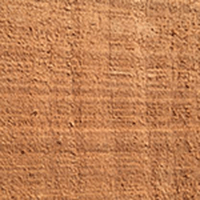
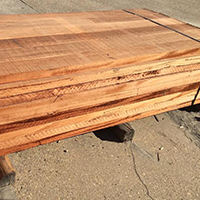
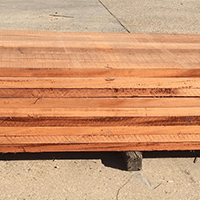
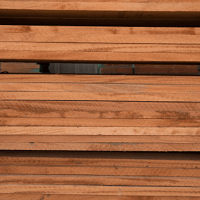
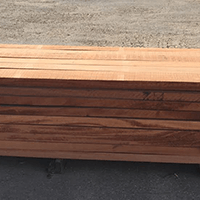
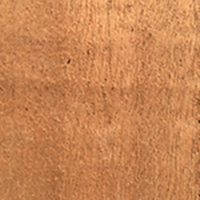
Share On: